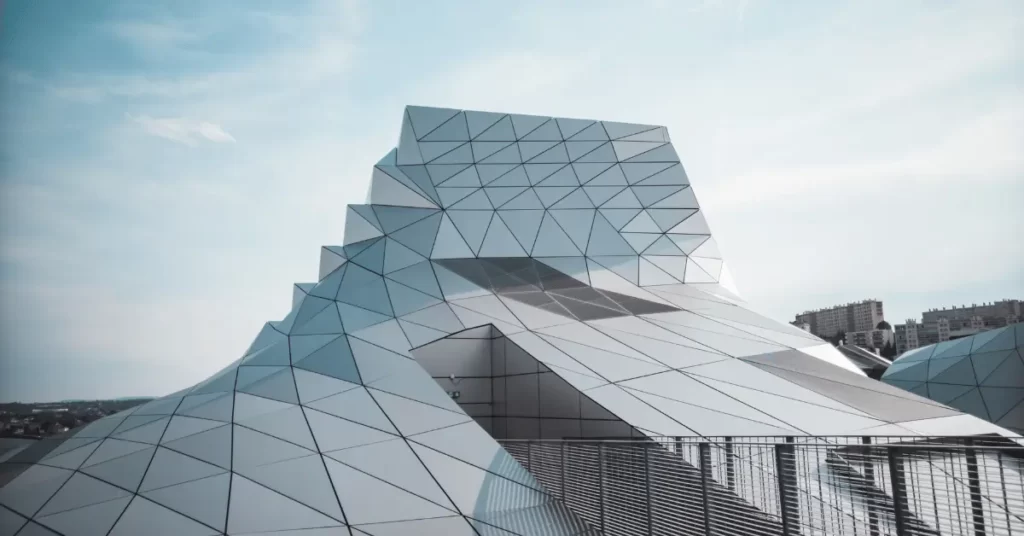The Evolution of Architecture- Architecture has always been a reflection of our technological advancements. From the earliest stone structures to the towering skyscrapers of today, every era has brought new innovations and tools that have shaped the way we design and build our cities. And with the rapid pace of technological development in recent years, the role of technology in architecture has become more important than ever before.
In this article, we’ll explore some of the latest advancements and trends in architectural technology, and discuss how they are changing the way we think about design, building, and the future of our cities.

The Role of Technology in Architecture: Evolution of Architecture – Advancements and Trends
3D Printing
One of the most exciting technological advancements in recent years has been the rise of 3D printing. While still relatively new to the field of architecture, 3D printing has already had a significant impact on the way we create and build structures.
With 3D printing, architects can create complex, intricate shapes and designs that would have been impossible to achieve with traditional building methods. This allows for more creative and innovative designs, and can even reduce the amount of material and waste involved in construction.
Virtual Reality
Another technology that is transforming the way we design and build our cities is virtual reality (VR). With VR, architects can create immersive, 3D environments that allow them to explore and visualize their designs in a way that was never before possible.
By using VR, architects can get a better sense of how their buildings will look and feel in the real world, and can make adjustments and changes before construction even begins. This not only saves time and money, but can also lead to more efficient and sustainable designs.
AI and Automation
Artificial intelligence (AI) and automation are also playing an increasingly important role in the field of architecture. With AI, architects can use algorithms and machine learning to analyze and optimize their designs, making them more efficient and sustainable.
Automation, meanwhile, is being used to streamline and simplify the construction process. Robots and drones can be used to perform tasks that are dangerous or difficult for humans, and can even be programmed to work around the clock, leading to faster and more efficient construction timelines.
Building Information Modeling
Building Information Modeling (BIM) is another technology that is changing the way architects design and build structures. With BIM, architects can create digital models of their designs that contain detailed information about every aspect of the building, from its materials and construction methods to its energy usage and maintenance needs.
By using BIM, architects can collaborate more effectively with engineers, contractors, and other stakeholders, and can make more informed decisions about their designs. This can lead to better buildings that are more efficient, sustainable, and cost-effective.
Sustainability and Green Building
Finally, technology is also playing a critical role in the push towards more sustainable and green building practices. From solar panels and green roofs to smart building systems that optimize energy usage, architects are using a wide range of technologies to design buildings that are more energy-efficient and environmentally friendly.|
In fact, many architects are now using a “whole systems” approach to building design, taking into account the entire lifecycle of the building, from construction to demolition. By using advanced modeling and analysis tools, architects can create buildings that have a minimal impact on the environment, and can even generate their own energy.
Conclusion
Technology is changing the face of architecture in ways that would have been unimaginable just a few decades ago. With new advancements and trends emerging every day, it’s clear that technology will continue to play a critical role in the future of architecture.
As architects and designers, it’s important to stay up-to-date on the latest technological developments and trends in the field. By doing so, we can create buildings that are more efficient, sustainable, and innovative, and help to shape the future of our cities in a positive way.
Whether it’s through the use of 3D printing, virtual reality, AI and automation, building information modeling, or sustainable building practices, technology is providing us with the tools we need to create the buildings of tomorrow. By embracing these tools and technologies, we can unlock new possibilities for design, construction, and the future of our built environment.
In conclusion, technology has become an essential component of modern architecture, and the advancements and trends we’ve discussed in this article are just the tip of the iceberg. As technology continues to evolve, we can expect to see even more exciting and transformative changes in the field of architecture in the years to come. As architects, it’s up to us to stay ahead of the curve and leverage these new technologies to create buildings that are more innovative, efficient, and sustainable than ever before.
For more SketchUp tutorials you can check out https://www.sketchupguru.com/blog/
You can also check more tutorial videos for sketchup on our YouTube Channel,
https://www.youtube.com/c/SketchupGuru
To know about the Top Online 3D Rendering Courses for 2022 click,













